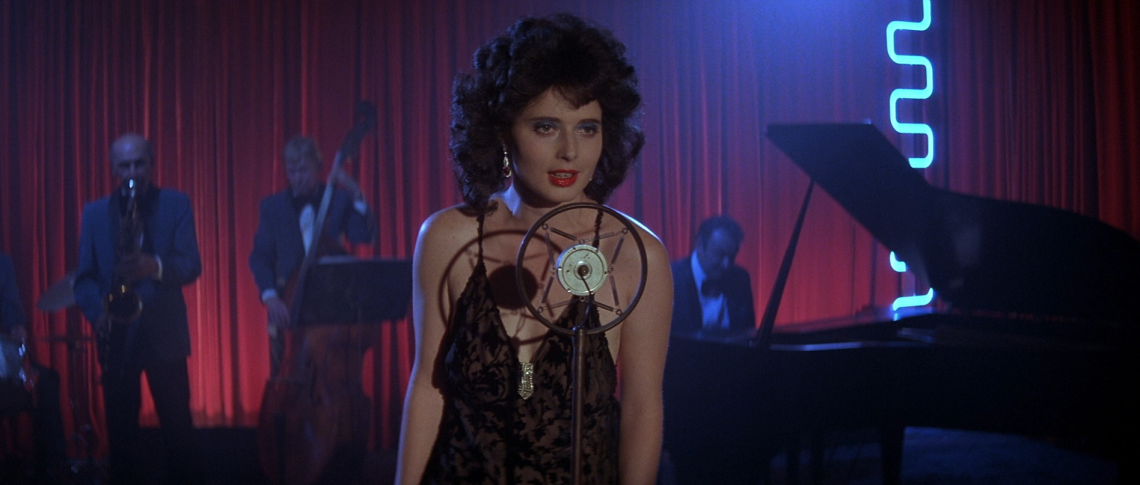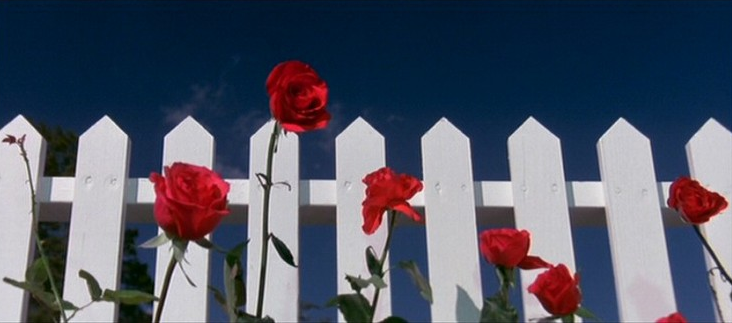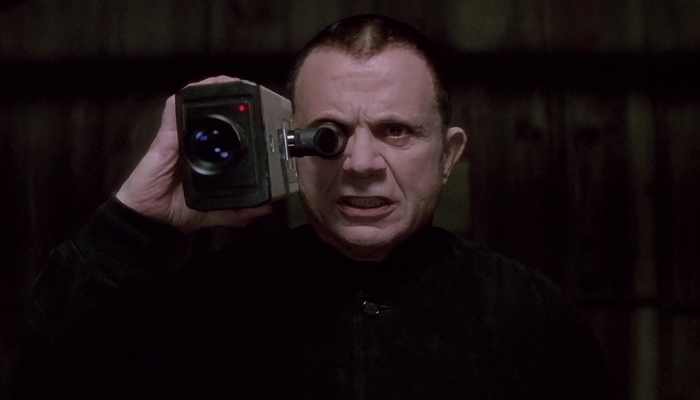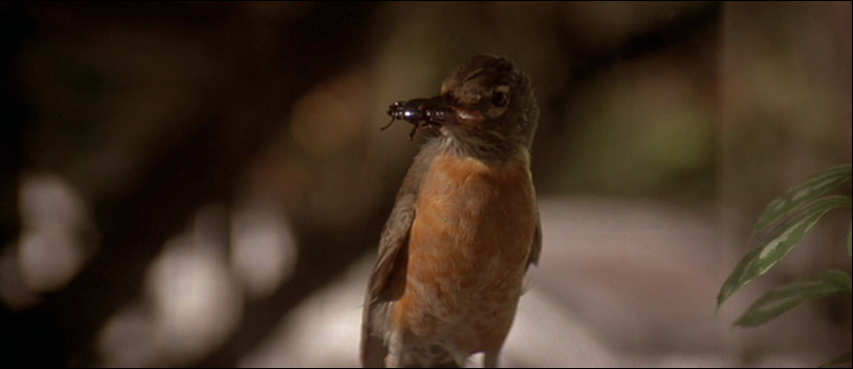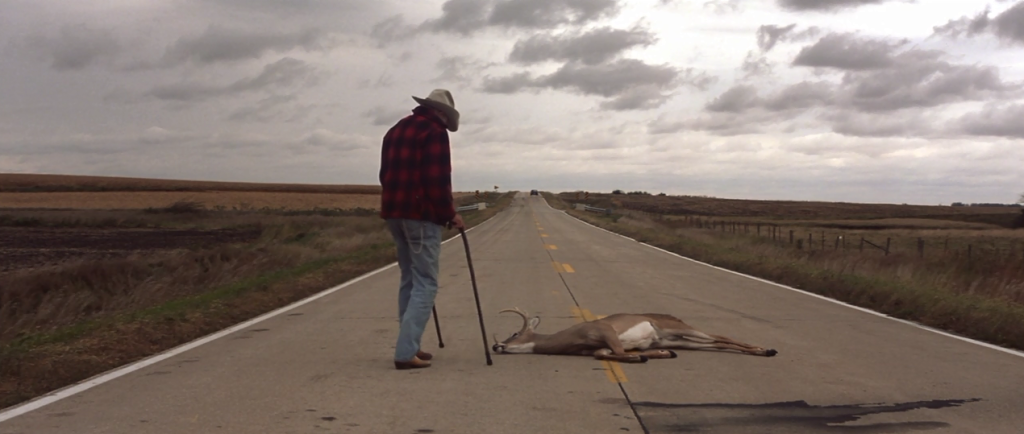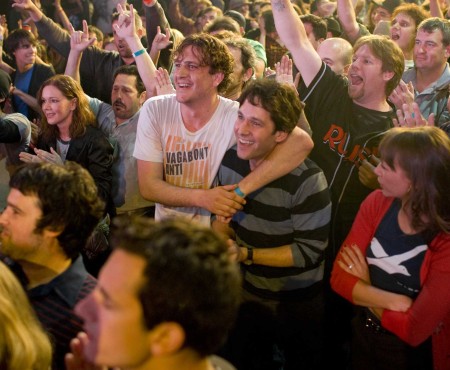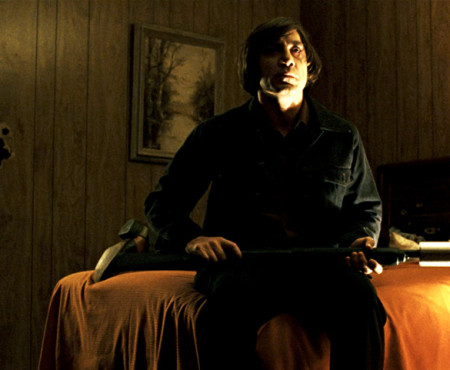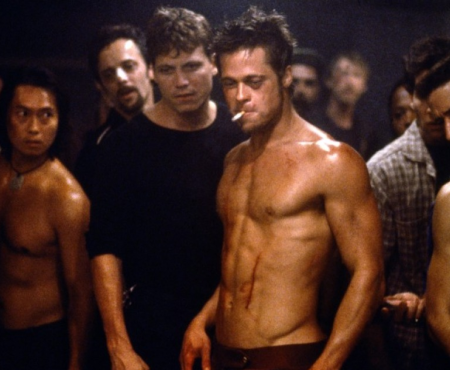If one wanted a definitive list of the greatest films of all time—or at least, a definitive list of what are perceived, at this moment in time to be the greatest films of all time—you could not do much better than the list on They Shoot Pictures, Don’t They? The website compiles its list by aggregating and weighing thousands of lists that tackle everything from the best films of the decade or of all time to the best commercially unavailable films that can be found online (their website has a better explanation of how they rank the top 1,000 films). Citizen Kane remains on top (Vertigo is second, despite overtaking it in the most recent Sight & Sound poll), and the top 50 and 100 looks like one would expect.
Blue Velvet finds itself among those top 100, coming in at 80, just seven spots behind Mulholland Drive and 167 spots ahead of Eraserhead, David Lynch’s next highest ranking film (Lost Highway, Elephant Man, Wild At Heart, and Inland Empire all make the list as well, much further down). This shouldn’t surprise me, as those three finished in the same order on Sight & Sound’s most recent poll, at 28, 69, and 183. Yet or some reason, it does. I have never seen Blue Velvet as one of Lynch’s best films, but rather as the first, most digestible of Lynch’s similarly themed works, essential primarily in how it sets up these themes so other films can expand on them.
Of course, all of Lynch’s subsequent works have similarities with Blue Velvet—no doubt a reason why it is increasingly seen as one of Lynch’s seminal films—but most similar, at least on the surface, are Twin Peaks and Mulholland Drive. Twin Peaks pits a seemingly idyllic small town against a seedy underworld and uses the Laura Palmer character as an embodiment of the arising contradictions between the two world. As such, the series is a literal exploration of and attempt to make sense of the “Lynchian” depicted in Blue Velvet. Mulholland Drive, meanwhile, similarly intertwines the light with the dark and the melodrama with the detective/noir story and comments heavily on Hollywood myths and the cultural reproduction of signs. Like Blue Velvet, it ends in a way that throws the majority of the film into question (was it all a dream?), and even relies heavily upon a Roy Orbison song.
Indeed, the similarities between Mulholland Drive and Blue Velvet could fill pages (and have, elsewhere), which raises my first question: Why should two of the most similar works by one of the greatest and most unique directors of the past 40 years be the primary focus of scholarship? All of Lynch’s films are debated and written about within the critical and academic community, but I can’t be the only one who wishes as much attention was paid to Wild At Heart, Lost Highway, and The Straight Story as well. Each of these films build on Blue Velvet, anticipate Mulholland Drive, and also offer unique cinematic pleasures that elude Blue Velvet. Much of what makes Lynch a fascinating director is how he forces viewers to redefine what it means to be “Lynchian”, but by canonizing two films as similar as Blue Velvet and Mulholland Drive to a larger extent than his other works denies this pleasure and pigeonholes Lynch, who, in fact, is able to build on the Blue Velvet template in subtle ways, creating more varied works of equal depth.
Looking past the obvious, it’s worthwhile to consider Lost Highway again. Commonly dismissed as incomprehensible, as if Lynch’s primary concern is narrative, the neo-noir does away with the melodrama of Blue Velvet entirely but modifies and complicates many of that film’s concerns. In it, Fred, so distraught over murdering his wife Alice (Patricia Arquette), attempts to replace her with a deceptively similar Renee (Arquette again). After failing, he wills himself into a nightmare neo-noir in which Pete (Balthazar Getty), possibly his own alternate identity, is wronged by Alice, who is reincarnated/reimagined as a responsible party: the femme-fatale. Both films are concerned with the dark side of sexuality, but where Blue Velvet rejects that side while simultaneously signaling the ridiculousness of embracing the “purity” and “innocence”, Lost Highway depicts a man, possibly two, who embraces that darker side, recognizable in Arquette’s fetish-friendly attire and the film’s noir pastiche.
Structurally, the film is far more complex than Blue Velvet, modeling itself after a Mobius strip as two seemingly separate paths reveal themselves as one in the end. Likewise, where Blue Velvet places its four primary characters (Jeffrey, Sandy, Dorothy, and Frank) into clear roles, Lost Highway allows one actress to play both of the film’s women, polar opposites in appearance (save for the shoes) but both images of sexuality, one repressed and one on display, and employs two actors to play what is likely one self. Further, one character, the “Mystery Man”, is able to move freely between the states of consciousness. Certainly Lost Highway is a rich text for psychoanalytic readings based on this synopsis alone, even if it does not offer a recreation of the primal scene in the same vivid detail as Blue Velvet.
Many of Lost Highway‘s most important images, lines, and sounds are seen and heard in both sections. Where Lost Highway depicts the theme of doubling in its structure, casting, and in subtle diegetic details (a song performed by Fred is later heard by Pete on the radio), Blue Velvet often relies on more overt dichotomies. It characterizes Sandy and Dorothy as polar opposites and utilizes a comparatively simple night/day distinction as its structural base, positing the simplicity of small-town life as naïve and unaware of the dangers lurking beneath the surface.
Instead of alternating between the constructed and the real, Lost Highway presents the two together, untangling and re-tangling them until we exit on the two-lane highway on which we began. Like Eraserhead—and unlike Blue Velvet—Lost Highway rejects dialogue and narrative and takes us inside one man’s nightmare entirely through its visual and aural aesthetic, and if it lacks any clear “answer”, it’s only because of how unflinchingly it portrays a disturbed man’s conscious. The only ambiguity in Blue Velvet’s ending, on the other hand, is whether Jeffrey dreamed the entire scenario, but the “answer” here does not matter: Either way, Jeffrey has internalized the images and characters, ready to take them with him in his new role as the father.
Does any of this make Lost Highway or Twin Peaks better than Blue Velvet? That depends who you ask, but there is no right answer. Still, I hope to illuminate why I believe it to be one of Lynch’s simpler works. It is, of course, not without its virtues (and they far exceed the vices), from the great cinematography to wild shifts in tone that (thanks largely to Angelo Badalamanti’s score) somehow work every time to its questioning of Hollywood genre and brilliant elements of postmodernism. Regardless, I can’t help but think that, were equal attention paid to Lynch’s later, more difficult works, many would find them to be at least as rewarding.
To reiterate, Blue Velvet simply establishes and adheres to its comparatively strict dichotomies. Could any of these other films be said to have one character who, from beginning to end, represents purity innocence and another who represents a darker, more macabre world? Twin Peaks puts them into one, Lost Highway‘s dual-casting of Patricia Arquette can be read as a comment on the inevitable failures of such attempts, and Mulholland Drive‘s blue box delights in its corruption of such an easy binary and leaves the viewer to piece the film together after the final shot.
Where these later works regularly double back and reconfigure themselves, doubting their own stories and methodology, Blue Velvet primarily resorts to parody, doubting what it references but rarely doubting itself. It appropriates 1950s melodrama in its characters, its small-town setting, and its use of the family and home as a space of innocence, but it elevates the “dated” components—namely excessive sentiment and happy endings—to such hysterical levels that it questions melodrama itself.
Take, for example, the scene in which Sandy (Laura Dern) tells Jeffrey (Kyle MacLachlan) her dreams about robins (“the robins represented love!”) after Jeffrey, moved to tears, cries out, “why are there people like Frank?” These lines, delivered outside of a church with organ music accompanying are so overacted that it is clear that Blue Velvet is making fun of attempts to sort out good and bad, right from wrong. It doubts such conventions, but never questions its own methods of corrupting them. In the same conversation, Jeffrey tells Sandy “you’re a neat girl,” and is greeted with “you too,” a joke that ensures that, if you were not already laughing, you are now.
As if the mockery wasn’t obvious enough, we are later treated to a shot of Jeffrey’s room showcasing a decorative robin on his wall—this “love” that will surface in the “happy ending” is nothing but a prop, triple underlined by the bug in the bird’s mouth and the obvious mechanical nature of the robin itself. The ending even lets the titular song creep in before the camera pans up to the sky, recalling the artifice of the film’s beginning. The message—an indictment of the “happy endings” of ‘50s melodramas, an equation of Jeffrey and Frank, a rejection of the idealistic values and beliefs of small-town America, could not be more clear, but that’s precisely the problem: Lost Highway, Mulholland Drive and Inland Empire regularly question their own syntax, necessitating enormous corruptions of narrative that have led to criticism of incomprehensibility, but this is, in my eyes, precisely why these films are more rewarding. Blue Velvet is so wrapped up in parody that it sometimes forgets its own indulgences.
Compare Blue Velvet’s distant parody to Todd Haynes’ Far From Heaven. Todd Haynes’ film reminds us through its style and look what ‘50s melodramas were like, but the plot, as well as a few discrepancies (primarily in the average shot length and the ingenious deployment of an F-bomb, quickly apologized for) reminds us that ‘50s melodramas could not have been like Far From Heaven. It is pastiche, not parody. It emphasizes similarities and draws on something that came before to gain its power. Blue Velvet, on the other hand, is parody. It mocks the trademarks of ‘50s melodrama, and emphasizes the difference between “now” and “then”, and our primary take away is not of the virtue of such films but instead of their silliness. “Now” we see how ridiculous things were back “then”, yet it never questions the messages it creates through such distanciation.
Perhaps the best such example is in the way the film begs you to interpret it psychoanalytically. As strong as the staging of the “primal scene” is, the constant reminders in dialogue that these characters are “mommy” and “daddy” and “baby”, as well as Frank’s (Dennis Hopper) infantile inarticulateness and tedious, pathological swearing, suggest that psychoanalysis is merely a pretext to telling the story. It is somewhat ironic, then, that Blue Velvet is so acclaimed by psychoanalysts, although the richness of such readings serve to remind us that the postmodern can signify both the signs that make it up and comment on what those original signs were saying. In this respect, the film is a success, but that the same film that imitates melodrama so mockingly wallows unquestioningly in the merits of psychoanalysis is, if not problematic, unfulfilling simply because it again presents itself on a platter. Blue Velvet does the work for you, films like Lost Highway and Mulholland Drive make you do the work.
Indeed, even when one unquestioningly buys into Blue Velvet‘s postmodern indulgences, from genre parody/pastiche (not just of melodrama, but also of detective stories/noirs) to psychoanalysis, they are all externalized. Despite their richness, this does not leave much room for the viewer, and if Blue Velvet questions aspects of its presentation, those questions, (presented, for example, in the form of the mechanical robin) are ingrained on the film’s surface, not its subtext, which brings us to yet another later work: The Straight Story.
This “sweet”, “sentimental”, “Disney”, “G-rated” film is primarily notable for how straight and unambiguously it plays, but in fact, its merit lies in how it does exactly the opposite. The Straight Story immediately recalls Blue Velvet in its opening of small-town clichés, and from then on, it internalizes much of the tensions present in the earlier film. The Straight Story is constantly doubting itself, but instead of presenting this in mechanized robins and excessive performances that bring the doubt to the film’s surface, it represses them in its straightforward and low-key presentation, forcing viewers to look for it in far more subtle details.
On the surface, The Straight Story is about a World War II veteran who drives his lawnmower 240 miles to make amends with his dying brother, but editing and performance encourage the viewer to doubt what Alvin Straight is telling us, and the attentive viewer will likely notice something amiss. In fact, The Straight Story is perhaps the most deceptive film in Lynch’s filmography, and repeated viewings reveal that Straight is primarily trying to come to terms with his responsibility in letting one of his grandchildren burn to death, leading to the rest being taken away by the state.
These details all emerge through the seemingly minor parts of the film: an encounter with a drifter, a deer killed in traffic, the motif of fire, close-up reaction shots on Straight’s face, and the use of animals—wild, sheltered, made into trophies—all suggest that the story Straight is telling, and by extension, the story that we are being told, is not being told straight. Lynch uses these images to get at the real truth. He forces us to doubt what we are being told and to look closer for the real story. If Blue Velvet, in inscribing doubt so close to the film’s surface, tells us how obvious the “real” truth is, The Straight Story tells us that the truth is rarely so obvious. Instead of directly mocking the artifice it presents to us, it sells it to us so effectively that many are unable to see past it. It’s hard to imagine the same thing happening with Blue Velvet.
I say all this not to suggest that Blue Velvet is “bad” or “overrated”, but rather to encourage similar analysis of Lynch’s less-studied work (again, I use this term relative to Lynch’s oeuvre). These works diverge from Blue Velvet and offer their pleasures differently, uniquely, and yes, more challengingly. There is certainly value to appropriating and commenting on the cultural artifacts and signs with which we interpret the past in such an unfettered way, as Blue Velvet does, but I can’t help but think that the way Blue Velvet encourages one to doubt what it imitates is at least partly responsible for the overwhelming amounts of literature on it. Perhaps if Lost Highway or The Straight Story was not so impenetrable, or if Twin Peaks was shorter, they would receive their just attention. But if that was the case, they would be too similar to Blue Velvet, and that would make Lynch the one thing he should never be: incontestably, unvaryingly “Lynchian”.

















